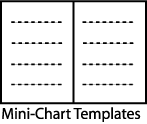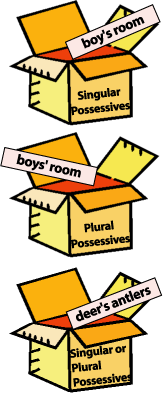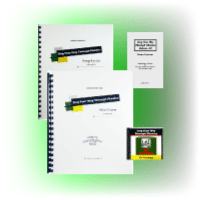





Singular and Plural Possessives Lesson Plan
Belongings
- Students will learn to spell and punctuate singular and plural possessive words.
- Students will learn to spell and punctuate regular and irregular possessive words.
Where do we place that apostrophe? To determine whether the apostrophe precedes or follows the letter s, we need to think of the possessor. If the possessor is a singular word like boy, the apostrophe is placed before the letter s. Example: the boy’s jacket. If the possessor is plural word like boys, the apostrophe is placed after the letter s. Example: the boys’ jacket. This rule holds true whether the possession is a singular word like jacket or a plural word like the jackets. Examples: boy’s jackets (two or more jackets belong to one boy), boys’ jackets (two or more jackets belong to two or more boys). The exception to this rule occurs when the spelling of the plural possessor does not end with the letter s. Examples: students, men, women. In these cases, the plural possessor is followed by apostrophe-s as in students’s pool, men’s store, women’s clothing. It is important to remind students to look at the possessor, not the possessions, when determining where to put the apostrophe in a possessive word. The term singular possessive refers to one possessor whereas the term plural possessive refers to more than one possessor. The song Belongings (Sing Your Way Through Phonics CD, Vol. 3) helps students remember the rule for forming singular and plural possessives. A possessor can be a noun (boy’s, girl’s, John’s, dogs’) or a pronoun (my, his, her, its, their). Pronouns do not use apostrophes to show possession.
- Sing Your Way Through Phonics Volume 3 CD, Tracks 3 and 4 (Listen to audio sample)
- Sing Your Way Through Phonics Volume 3 Mini-Charts (pp. 11-24)
- Optional: Index cards
Note: If you do not have the CD or Mini-Charts, you can still teach this singular and plural possessives lesson plan using the folk tune listed on the Belongings Song Lyrics page. You can create your own mini-charts using the words in bold print letters in each verse of the Song Lyrics.
Find out more about Sing Your Way Through Phonics products.
Order our cost-saving Volume 3 Combo online.






- Ask one of the students to lend you a book. On the board, write “This is ____ book.” Ask, “What word should we put in the blank if we want to write that the book belongs to Johnny.” (Johnny’s). “What marks and letters do we need to write after the word Johnny to show that he is the owner or possessor of the book?” (apostrophe-s)
- Ask two of the boys to lend you their jackets. Point to Mini-Charts page 12. Say, “One of these phrases means that the jackets belong to only one boy and the other phrase means that the jackets belong to two or more boys. Which phrase on the mini-charts shows that these jackets belong to two boys?” (top phrase--boys’ jackets) “If the top phrase means that the jackets belong to two or more boys, how many people own the jackets in the bottom phrase?” (only one boy).
- Point to the top phrase and say, “So if we want to show that two or more boys own the jackets, what do we have to write after the word boy?” (s-apostrophe) Point to the bottom phrase and say, “And if we want to show that only one boy owns the jackets, what do we have to write after the word boy?” (apostrophe-s) This rule is true whether we are talking about one jacket or many jackets. To help us decide where to put the apostrophe, we have see how many people own something. The people who own something are called possessors. Ask students to repeat the word possessors. Check for understanding-ask students what the word possessors means. (people who own something)
- Say, “Now, we are going to listen to a song about possessors that explains when to use apostrophe-s and when to use s-apostrophe.. Watch as I point to the examples in this song.” Play Sing Your Way Through Phonics CD Track 3, pointing to the words on Mini-Charts pages 12-23 to coordinate with the song lyrics.
- Turn to Mini-Chart p. 13 and point to each phrase, asking students to tell what it means. (top phrase-hats belong to girls, bottom phrase-hats belong to one girl) Repeat the process with pages 16, 17, 20, and 21. (p. 16 top phrase-room is shared by brothers, bottom phrase-room belongs to one brother; p. 17 top phrase-dessert is shared by sisters, bottom phrase-dessert belongs to one sister; p. 20 top phrase-grandfathers both own the house, bottom phrase-house belongs to one grandfather; p. 21 top phrase-guys own a fancy car , bottom phrase-fancy car belongs to one guy.)
- Say, “When the possessor or owner is one person, we call it a singular possessor. When the possessors or owners are more than one person, we call it a plural possessor.” In the song, you heard a rule for using apostrophes with singular and plural possessors and you saw some examples that use this rule. Say, “Leaving out the exception pages, where do we put the apostrophe if the possessor is singular?” (before the letter s) “And where do we put the apostrophe of the possessor is plural?” (after the letter s)
- The song also teaches us about exceptions to that rule. Point to Mini-Chart p. 18 and say the following as you point to the appropriate words:
...So if your singular words possess, you have to add apostrophe-s
But if it’s plural words you see, you need that s-apostrophe. This rule’s reliable unless that plural does not end in s. Then you must add an apostrophe-s. Play CD Track 3 and ask students to join in singing on the pages labeled “Exception!” - Refer to Mini-Chart pages 15, 19, and 23. “Why are the words people, students, and mice called exceptions?” (Most plurals end with the letter s. We just add an apostrophe to make them possessive. But these words use apostrophe-s because the plural form does not end with the letter s.) Say, “What are some other plural nouns that do not end in the letter s?” (men, women, policemen, policewomen, firemen, mailmen, sheep, deer, fish, starfish, geese, steer, cattle, octopi, hippopotami, moose, quail)
- Say, “Let’s sing the song Belongings to help us review the rules we have just learned.” Play CD Track 3 and allow one or more students to point to the target words while the class sings along.

- Practice singing Belongings daily for a few days. Review the rules for singular possessives (add apostrophe-s), plural possessives (add only apostrophe after the letter s), and exceptions (add apostrophe-s if the plural does not end in s.)
- Say, “We can show possession or ownership by saying that something belongs to or is owned by someone. We can also say that someone
has something or that someone shares something.” - Using the Mini-Chart Templates, help students substitute other possessive sets of rule-following words in the song. Examples: p.12-13 kids’ cookies, kid’s cookies, dogs’ spots, dog’s spots; p. 16-17 students’ desk, student’s desk, cousins’ party, cousin’s party, p. 20-21 mothers’ pie, mother’s pie; cats’ loud meow, cat’s loud meow. Sing the song using these new examples with the instrumental track (Track 4) of Belongings.
- Use the Mini-Chart Templates to substitute different examples of the Exception pages. See examples in Step 8 above. Sing the song using these new examples with the instrumental track (Track 4) of Belongings.

- Create a word wall of words whose plurals do not end in the letter s. (See Procedure Step 8.)
- Singular and Plural Possessives Exercises. Do a Belongings Word Sort. Print each phrase from the song Mini-Charts on index cards. Use additional examples (See Step 8 in Procedure and Step 3 in Follow-Up) until about 50 cards are printed. Mix cards well. Sort into piles labeled Singular Possessives, Plural Possessives, and Singular or Plural Possessives. For additional challenge, try to beat a one minute-timer.
- Create a class Belongings Book. Cut out catalog and advertisement pictures of singular and plural objects. Cut out catalog and advertisement pictures of individuals and groups of people or animals. Combine pictures of possessors and objects and label each page. Examples: ladies’ casseroles, child’s shoes
- Students will sort phrases in Extensions Step 2 correctly in one minute or less.
- Without seeing the Mini-Charts, students will pass a dictation test, writing the Mini-Chart phrases while the teacher or leader reads the lyrics to Belongings.
